




-
Application
- Industry
- Heating industry
- Individual solutions
- Law regulations
- Certification
- Research and development
- Public perception
- Investment map
-
Transport
- Hydrogen buses
- Hydrogen trains
- Special vehicles
- Law regulations
- Certification
- Research and Development
- Public perception
- Investment map
-
Production
- Technology
- Green hydrogen from Renewable Energy Sources
- Grey hydrogen
- Hydrogen production from biomass
- Law regulations
- Certification
- Research and development
- Public perception
- Investment map
-
Transmission, Storage



Cookies
Informujemy, iż w celu optymalizacji treści dostępnych w naszym serwisie, dostosowania ich do Państwa indywidualnych potrzeb korzystamy z informacji zapisanych za pomocą plików cookies na urządzeniach końcowych użytkowników. Pliki cookies użytkownik może kontrolować za pomocą ustawień swojej przeglądarki internetowej. Dalsze korzystanie z naszego serwisu internetowego, bez zmiany ustawień przeglądarki internetowej oznacza, iż użytkownik akceptuje stosowanie plików cookies. Czytaj więcej Polityka prywatności
Transport
Hydrogen trams and special vehicles
Hydrogen technologies are being implemented worldwide in many areas, but transport remains the most prominent. In Poland, there is a growing momentum in the process of implementing hydrogen technologies - in 2021 alone, Polish cities have applied for funding for more than 120 hydrogen buses, and several dozen Toyota Mirai passenger cars registered in Poland are on the road.Apart from Solaris, other hydrogen buses are already on the Polish market - Autosan's Sancity 12LFH is in the road testing phase, while ARP E-Vehicles is delivering the first small battery-powered PILEA vehicles. This design is to have a fuel cell conversion version in the longer term. The company is also working on an electric bus with an on-board hydrogen source - a methanol cell. However, this does not mean that the use of hydrogen is limited to road transport only.
Trams running on hydrogen
The first city to put hydrogen trams on the tracks was the Caribbean city of Aruba in 2012, where an American design from the 1930s was fitted with fuel cells. In the 35,000-strong city of Oranjestad, four such vehicles appeared, two of them double-decker.
Currently, the development of hydrogen trams is progressing fastest in China, which presented its vehicle, the ForCity 15T unit, in April 2015. It was a tram licensed from the Czech company Skoda Transportation, while the fuel cells used in it were manufactured by Canada's Ballard Power Systems.
The next stage was to introduce its own technology. In 2019, CRRC Qingdao Sifang launched in Foshan (Guangdong province) a vehicle equipped with fuel cells supplied by a Canadian partner. The tram has 3 sections, takes 285 passengers and travels at a maximum speed of 70 km/h. The range of the vehicle on a single charge is approximately 100 km/h. The challenge now facing the designers is to further increase the range, miniaturise the power systems and improve efficiency.
Hydrogen trams have entered the testing phase also in South Korea, which intends to allocate the equivalent of over PLN 140 million for the development of this technology. The production of finished trams is to start in 2024, and the machines themselves are to have a power of ca. 380 kW, which is the equivalent of 4 fuel cells used in the Hyundai NEXO passenger car (95kW).
Hydrogen special vehicles
One application for fuel cells is special vehicles that do not travel on public roads. Terberg has supplied a tractor unit (Model YT203-H2), which is being tested in Rotterdam and Antwerp, among other places, and is to be offered in parallel with diesel solutions once the tests are completed. The aim of the tests is to gather experience in order to develop optimal solutions and launch production, which is expected to start in 2023.

In the US, the most popular hydrogen-powered vehicles are... forklift trucks. More than 20 000 of them are already in use in warehouses, industrial plants and handling terminals. In addition to the environmental and health benefits, another advantage is the convenience of use - hydrogen trucks can be refuelled in a few minutes, which is much faster than charging or replacing the battery, which takes about 20 minutes. In addition, a hydrogen refuelling station takes up less space than a battery charging/storage station.
Small road vehicles
The use of hydrogen in vehicles includes not only large but also completely small road vehicles such as motorbikes. H2 Motronics presented in mid-October 2021 a prototype of a unicycle that is 25% lighter than its battery-powered counterpart. Production is likely to start as early as 2022, but more significantly, the solutions developed as part of the development funding received by H2 Motronics will allow the miniaturised drive to be used for other vehicles, which include drones and snowmobiles. The money for further research and testing is to come from a collection estimated to be worth €1.5 million.
In summary, hydrogen will first be used in public transport and industrial plants. These two areas are predestined for the implementation of new technologies due to their intensive use and the characteristics of "return to base" characteristics, where hydrogen refuelling points will be located. However, the progressive miniaturisation of fuel cells and the falling price of their production, if this process continues, could enable their use in smaller vehicles such as rickshaws, scooters, or scooters - all areas where testing and research are currently underway.
Sources:
https://www.terbergspecialvehicles.com/en/development/hydrogen/
https://energynews.biz/hyundai-rotem-to-play-a-big-role-in-railway-industry-hydrogen-transition/
https://news.in-24.com/sports/motorbike/177466.html
https://www.toyotaforklift.com/blog/hydrogen-fuel-cell-forklifts-an-alternative-energy-solution
https://www.adaptalift.com.au/blog/2020-03-13-advantages-of-hydrogen-forklifts
Redakcja





